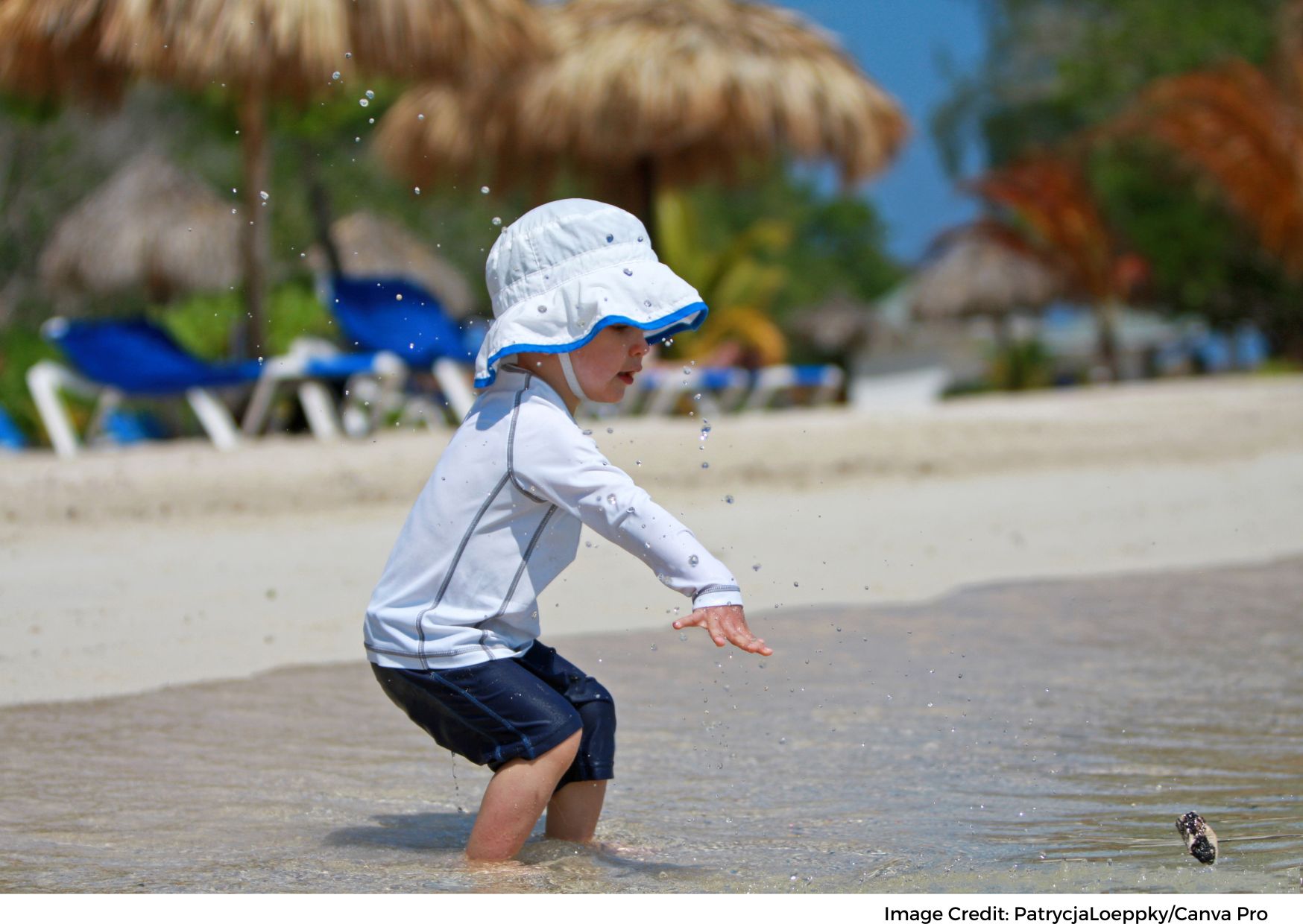Growing up I was always complimented on my glowing skin. As my tan grew I was told how beautiful and healthy I looked. I tanned easily, spent a lot of time playing outside, and rarely got a sunburn. I don't remember wearing sunscreen other than during a vacation to the beach.
 |
When my children were born our pediatrician explained the importance of putting sunscreen on our children anytime that they are outdoors. As I'm sure that you know, putting sunscreen on a wiggly toddler is a fun adventure. We found UV bathing suits and clothing for days that we were playing outside for long periods, used sunscreen with zinc oxide, and attempted to keep hats on them as they played. As they grew it became easier and we even taught them how to apply sunscreen themselves when we weren't around to do it. They even know that they need to reapply every couple of hours.
But what about the adults? We apply sunscreen with the kids when we head out to the pool or beach but we often get distracted with the children and forget to apply or re-apply ourselves.
 |
During a recent visit to my dermatologist for a spot on my face, my dermatologist told me it was caused by sun damage. Thankfully, it was not cancerous, but others in the future could be if I don't start taking care of my skin now.
She explained that everyone should wear sunscreen, on any exposed skin, with an SPF of 30 every day. You should also wear a lip balm that includes an SPF of 30. Sunscreen should be worn during the winter and on cloudy days. Just because you can't feel the warmth on your skin doesn't mean you aren't being exposed to damaging UV rays.
There are a variety of sunscreens that are made for daily use. Sunscreens can be found made with moisturizer for dry skin, zinc oxide for sensitive skin or light skin tones, and sunscreen with micronized titanium dioxide for those with darker skin tones.
Higher SPF should be worn when spending long amounts of time outdoors. While vacationing, be mindful that sand and water reflect the sun's rays making them 15-25% stronger. Surprisingly, snow reflection makes the rays 80% stronger, so it's even more important to wear protective clothing and reapply sunscreen while doing those activities. Wearing a hat helps share your face, ears, and neck.
 |
In addition to sunscreen, sunglasses should be worn when outdoors to protect your eyes. Make sure that your sunglasses note that they block 99-100% of all UV light.
While all of this is information that you've probably heard before, take the time to put your knowledge to good use. Schedule your dermatology appointment to have any current skin concerns checked and start adding sunscreen to your morning routine today.
Resources: PennMedicine.org; education.patientpoint.com



